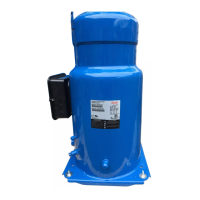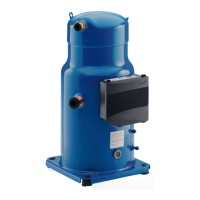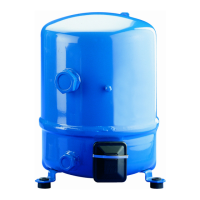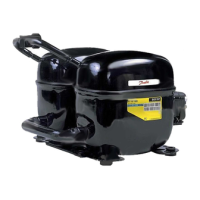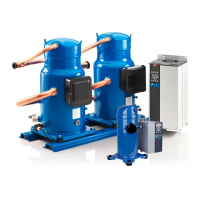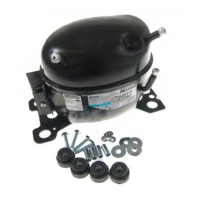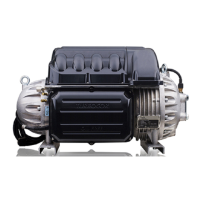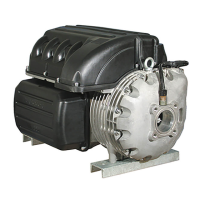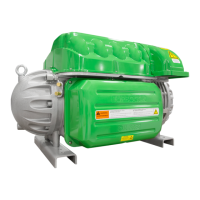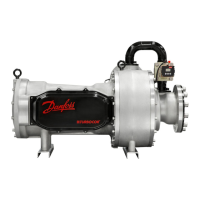APPLICATION GUIDELINES
FRCC.PC.007.B5.02
41
INSTALLATION
System cleanliness The refrigerant compression system, regardless
of the type of compressor used, will only pro-
vide high effi ciency and good reliability, along
with a long operating life, if the system contains
solely the refrigerant and oil it was designed for.
Any other substances within the system will not
improve performance and, in most cases, will be
highly detrimental to system operations.
The presence of non-condensable substances
and system contaminants such as metal shavings,
solder and fl ux, have a negative impact on com-
pressor service life. Many of these contaminants
are small enough to pass through a mesh screen
and can cause considerable damage within a
bearing assembly.
The use of highly hygroscopic polyolester oil in
R410A compressors requires that the oil be ex-
posed to the atmosphere as little as possible.
System contamination is one of main factors af-
fecting equipment reliability and compressor
service life. It is important therefore to take sys-
tem cleanliness into account when assembling a
refrigeration system.
During the manufacturing process, circuit con-
tamination may be caused by:
Brazing and welding oxides,•
Filings and particles from the removal of burrs •
in pipe-work,
Brazing fl ux,•
Moisture and air.•
Consequently, when building equipment and as-
semblies, the precautions listed in the following
paragraphs must be taken.
Tubing Only use clean and dehydrated refrigeration-
grade copper tubing. Tube-cutting must be car-
ried out so as not to deform the tubing round-
ness and to ensure that no foreign debris remains
within the tubing. Only refrigerant grade fi ttings
should be used and these must be of both a de-
sign and size to allow for a minimum pressure
drop through the completed assembly. Follow
the brazing instructions on next pages. Never
drill holes into parts of the pipe-work where fi l-
ings and particles can not be removed.
Brazing and soldering
When brazing copper-to-copper connections,
the use of copper/phosphorus brazing alloy con-
taining 5% silver or more with a melting tempera-
ture of below 800°C is recommended. No fl ux is
required during brazing.
Copper to copper
connections
Do not bend the compressor discharge or suc-
tion lines or force system piping into the com-
pressor connections, because this will increase
stresses that are a potential cause of failure.
Recommended brazing procedures and material,
are described section "Compressor connection".
Dissimilar metals
connection
When manipulating dissimilar metals such as copper and brass or steel, the use of silver solder and
anti-oxidant fl ux is necessary.
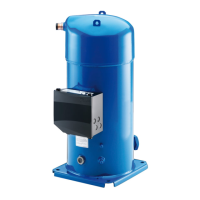
